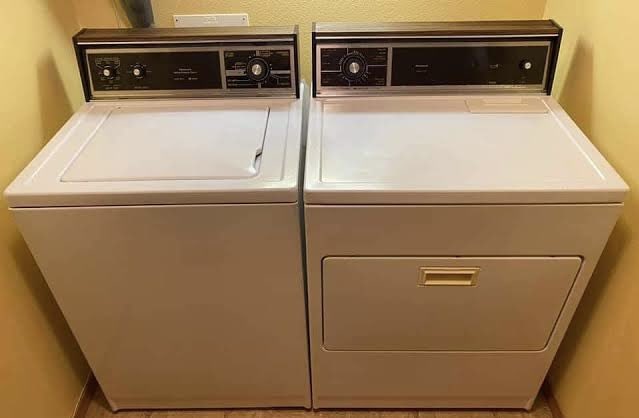
I just had a post go viral on X.
It got 1.7 million views in 24 hours.
It was not a meme, a funny video, or a screed about politics.
It was not a thread of photos featuring beautiful buildings, or strange objects, or nostalgia-inducing advertisements.
What was the secret?
It was the oldest form of content in the world: a story.

Where a viral idea comes from
Your best ideas and posts often come from little moments; when you observe something fresh, embedded in a living scene, the phrasing comes out most naturally.
Natural is always best, especially online. So many executives get this wrong. They write like they’re putting a deck together for the board. Like they’re applying for a job.
Real authority comes from being natural.

That’s what happened here.
Last Sunday, while taking care of my twin boys in the basement, and doing the umpteenth load of laundry for them, I had a memory flash into my mind as I loaded the dryer.
A few months ago, a belt in our old Maytag had snapped. Clothes went in, tumbled around, and came out wet. We called a local repairman in his 60s. Highly in demand, we were lucky to get a hold of him on short notice.
The repair guy came into the basement, spent two minutes with our machine, then called me down.
“It’s a snapped belt. I have a replacement in my truck.”
“What will it cost?” I asked.
“The part costs about $10. It’ll take me a few minutes to install it. $50 total.”
The price was good. But this was the second time we’d called him in five years. I asked if maybe it was time to replace the old Maytag.
He shook his head.
“Not unless you want more trouble.”
The new machines, he explained, were more complex. When they broke, it took more time, and more expensive parts, to fix..
“This one was made in Iowa, built like a tank. Keep it as long as you can.”
What happens when you go viral
I jotted down this this story, typing on my phone between rounds of playing with my boys.
Within a few minutes of posting it, the replies came flooding in.
Hundreds of people, thousands, wanted to weigh in with their experiences. It struck a chord.
I soon had to mute my notifications.
Five thousand likes. Ten thousand. Fifteen thousand.
It’s a rush when something goes viral; but more importantly, it’s also an opportunity to introduce yourself.
In this case, a small, authentic story showed people things I cared about: craftsmanship, American pride, the ways technology can both advance and decline. And, of course, storytelling.
So how can you apply this to your writing? A few ideas:
- Freshness. Observed life is best. Take things from your reality.
- Relatability. Universality. Everyone has experience of dryers. It’s an everyday experience
- Frustration. Low-stakes, high-passion opinions.
- Symbolism. It speaks to a greater social trend.
Think of topics in your life that are commonplace, but not often brought into view.
People like to share opinions on things that they see in their lives, but rarely have occasion to discuss. This creates a moment to bond.
Experiment with authentic stories, rooted in your experience, that take a larger lesson from a directly observed incident.
Small topics can generate outsized results. I gained several hundred followers from this post, some big engagements from important accounts. (Nice, but nothing compared to the last time Elon Musk shared my writing.)
More importantly, they build trust.
Most stories about dryers don’t go viral, and they don’t need to.
The goal is not to hack the algorithm. The goal is to build a relationship with your audience, and grow it over time.
As Robert M. Pirsig writes in Zen and the Art of Motorcycle Maintenance, quality is often about starting with observing one brick on one building.
Find your brick. See it. Share it.
You may be surprised by the results.
